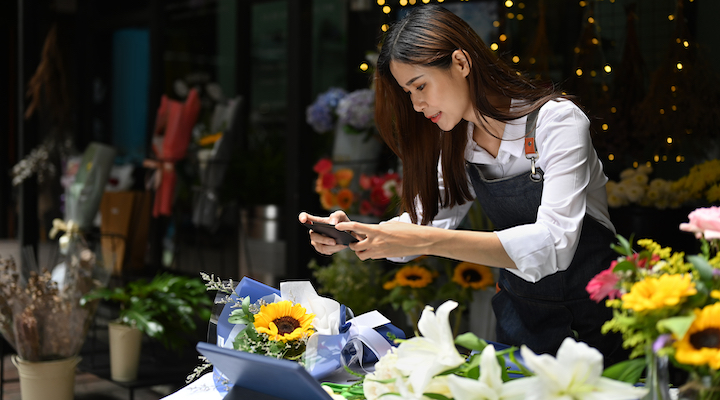Consumer expectations for their favourite brands are at an all-time high, demanding seamless and personalised experiences across various channels. In fact, according to IBM, omnichannel is now the preferred way of shopping for a quarter of global consumers.
While an increasing number of retailers are investing in omnichannel, not every brand has successfully implemented it. In fact, some brands continue to stick with traditional strategies, overlooking the evolving preferences of modern consumers. Despite being aware of these expectations, achieving true omnichannel remains a work in progress for the retail industry.
That’s the top-line insight from the 2024 Omnichannel Leadership Report, an annual assessment of the retail sector’s omnichannel competence by NewStore. The study evaluated 700 brands across 10 countries, including Australia, through secret shopper research. Examining online, mobile app, and in-store shopping experiences, the findings underscore a pressing need for digital transformation among most brands to unify their commerce strategies.
Online experience: Australia delivers again
For over a decade now, brands have placed significant emphasis on strengthening their online presence. This focus is primarily driven by the fact that consumers spend a considerable amount of time shopping online and the competitive pressure imposed by giants like Amazon.
Even though many brands have made investments online, the report reveals that the average website incorporates less than half of the evaluated features. However, Australia stands out as the leader in online experience for the second year in a row with a 55-per-cent adoption rate of website features. Mystery shoppers consistently noted the robustness of Australian websites, with features ranging from free shipping and buy now pay later (BNPL) services to omnichannel offerings like Bopis and Boris.
While Boris is almost universally available in Australia with a 95 per cent adoption rate, Bopis adoption lags at only a third, contrasting with North America’s adoption rate of over 50 per cent. This highlights an opportunity for Australian brands to expand their pickup services, aligning their shopping journeys more closely with consumer preferences.
Nevertheless, Australia’s commitment to bridging the digital divide between online and in-store experiences positions it as a trailblazer in the online commerce space. Brands worldwide can learn from Australia’s success and strive to incorporate more expected features into their sites.
Mobile experience: An opportunity to invest
Mobile devices serve as essential utilities in daily life. Even though this is a well-documented trend, the research indicates that only about a third of examined brands have a mobile shopping app. Notably, North America boasts a higher prevalence of apps compared to other regions (38 per cent versus 26 per cent). However, Spain emerges as a leader in this regard, with half of the evaluated brands offering a mobile app.
While having an app is commendable, it’s important to note that many current mobile shopping apps lack innovative features. The average mobile app experience has less than half of the evaluated features, which range from basic functionalities like wish lists and access to loyalty programs to more advanced features such as store mode, mobile wallet payments, and interactive content.
Interestingly, despite only 18 per cent of Australian brands having a mobile app, those that do have one offer an impressive 35 per cent of the evaluated features, surpassing both Europe and North America at 34 per cent.
However, overall, there remains ample opportunity in mobile commerce, particularly in integrating shopping apps with the in-store experience. Surveys reveal that most apps do not have a store mode, which would allow customers to use apps while shopping in-store. Having a store mode has been proven to significantly increase retail app engagement levels, so brands need to consider incorporating such features to elevate their apps.
Store experience: Apply a digital perspective
Retail stores have undergone significant transformations over the years. Even with many changes, three-fourths of consumers still rely on stores as part of their shopping journey. Yet, there’s a growing demand for digital tools to enhance the in-store experience. Consumers now expect store associates to have access to technology and data that seamlessly integrate online and mobile conveniences with brick-and-mortar locations.
When comparing different regions, retailers in North America lead in adopting factors contributing to a positive buying journey for both consumers and store associates, with a 21 per cent adoption rate. European brands follow closely behind with a 14 per cent adoption rate, while Australian brands trail with only 10 per cent of the solutions and services expected of omnichannel retailers.
The research evaluated eight elements specifically related to associate enablement, uncovering that the average associate can only complete half of these tasks. Common capabilities include checking store inventory, ordering out-of-stock items, and viewing customer shopping histories. On the flip side, less than a quarter of associates can execute talks like combining different types of transactions or accessing digital wishlists.
To remain competitive, Australian brands, like others worldwide, need to embed more digital features into their stores while empowering associates with greater mobility.
The case for unified commerce
The findings from the Omnichannel Leadership Report make a clear case for incorporating omnichannel features across all shopping channels. Where there are challenges, there are also opportunities, and in today’s retail era, there’s no greater opportunity than embracing digital transformation. Fortunately, retailers have many options available to them to get started and act while the momentum is high.






